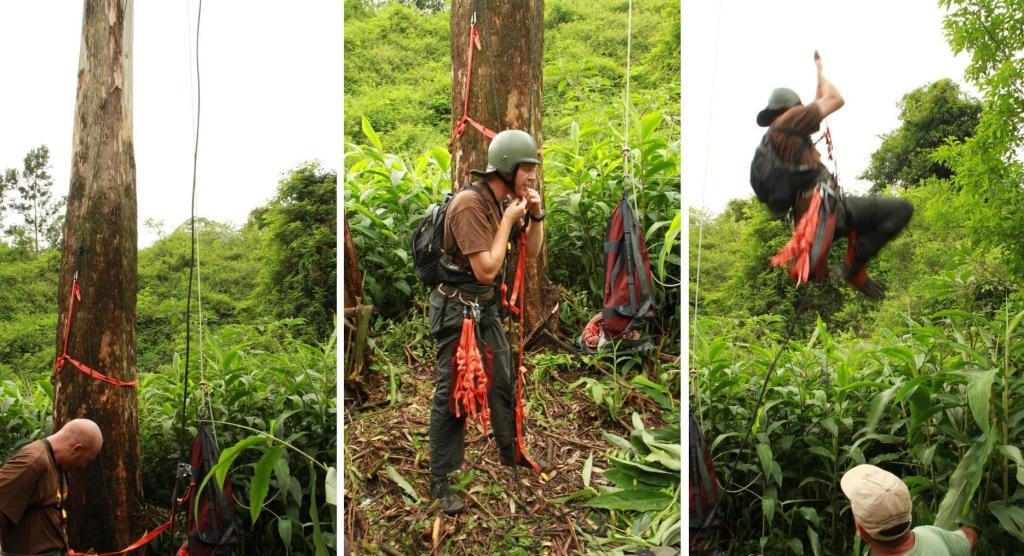On the 12th of December I answered a phone call from the SPCA in Pietermaritzburg. They had just received the still-warm body of a Crowned Eagle from a distraught local. I arrived at the SPCA soon after to collect the remains, my heart sank. The bird seemed in fine condition, mottley with new feathers molting through, powerful and clean talons, and plenty of muscle on its breast. A little blood oozed from a tiny hole near the lower jaw. We surmised it was shot and immediately sought to open an investigation with the police.
This bird was ringed. I identified it as a juvenile that I caught near its Clarendon nest site on the 25th of July 2012. That day, we waited until the kids in the park left the area, then set a trap and quickly had her. I restrained the eagle while Minke ringed it, and we had assistance from the Clarendon Veterinary Clinic staff. This was the second only to be ringed for the entire study, we were full of nerves and excitement and looking forward to following this character on a long life laid out ahead of her. I released the bird once we'd ringed and measured, and the photos were
featuring on the UKZN homepage for a while.
 |
| in July 2012, at nine months of age, a beautiful juvenile eagle |
 |
| in her urban home she became accustomed to the presence of people - these lightys respected that |
 |
| A camera trap deployed whilst trapping this eagle |
It is the first ring recovery from my study. And casts a dark shadow over the impression that these eagles are thriving in the city.
Shot in the head with a air rifle.
During the winter of 2011, the resident adult pair repaired their nest and laid their egg. The residents around the Clarendon nest site watched with anticipation. Hatched in October 2011, the chick flourished on prey the adults brought to the nest, mainly hyrax and Hadeda Ibis. It became extremely well known and popular among the residents and visiting photographers. Nearly four months later, on the 12th of December, the youngster made its first flight. It then stayed in the immediate area for another seven months, as these large eagles take a very long time to learn the techniques to hunt for themselves. Its insistent calling for food from the untiring parents made it a conspicuous and much-admired bird.
This eagle was one of the first to come to my attention, two months after arriving in South Africa to start the research. After ringing it in July, I kept my ear to the ground, phoning to receive the latest sightings and reports on the birds behaviour It started to wander, apparently hunting successfully for periods before returning to the nest area occasionally to try its luck begging for more food.
Eventually, on the 14th September 2012, this young eagle was heard calling from its usual spots for the last time. It was time to move out to a life of independence, to fend for itself and ultimately establish its own territory. This is the most dangerous time in a Crowned Eagle’s life, finding a place of its own, with enough prey to master the skills of hunting to avoid starvation. Indeed, as we now know, the young eagle succeeded in overcoming this obstacle to its survival - it had a full crop, probably a hadeda, and a long bone extending from its crop that it was apparently still in the process of swallowing.
 |
| John Carlyon, Clarendon Vet Clinic, extracting the pellet |
 |
| lead shows in an xray as a bright white blotch, the bone in the throat also shows on the xray |
The autopsy was performed recently, in the presence of South African Police, photographers, and an honorary officer of the Ezemvelo Wildlife Crime Investigations Unit. The ballsitic extraction revealed a .177 airgun pellet, a shamefully tiny projectile, lodged right below the first cervical vertebra. This was a well placed shot, a consolation that the bird did not suffer a painful and slow death, as many do when they have pellets festering in non-lethal parts of the body and limbs.
She travelled just seven kilometres from her place of birth, and survived just 15 months of what could have been a full 40 years of life. Wantonly destroyed in an act of criminal stupidity. Parents who provide children with dangerous weapons such as pellet guns should be made accountable for their actions. It is essential that these actions are met with the full force of the law.
Co-authored by John Carlyon and Shane McPherson





















































